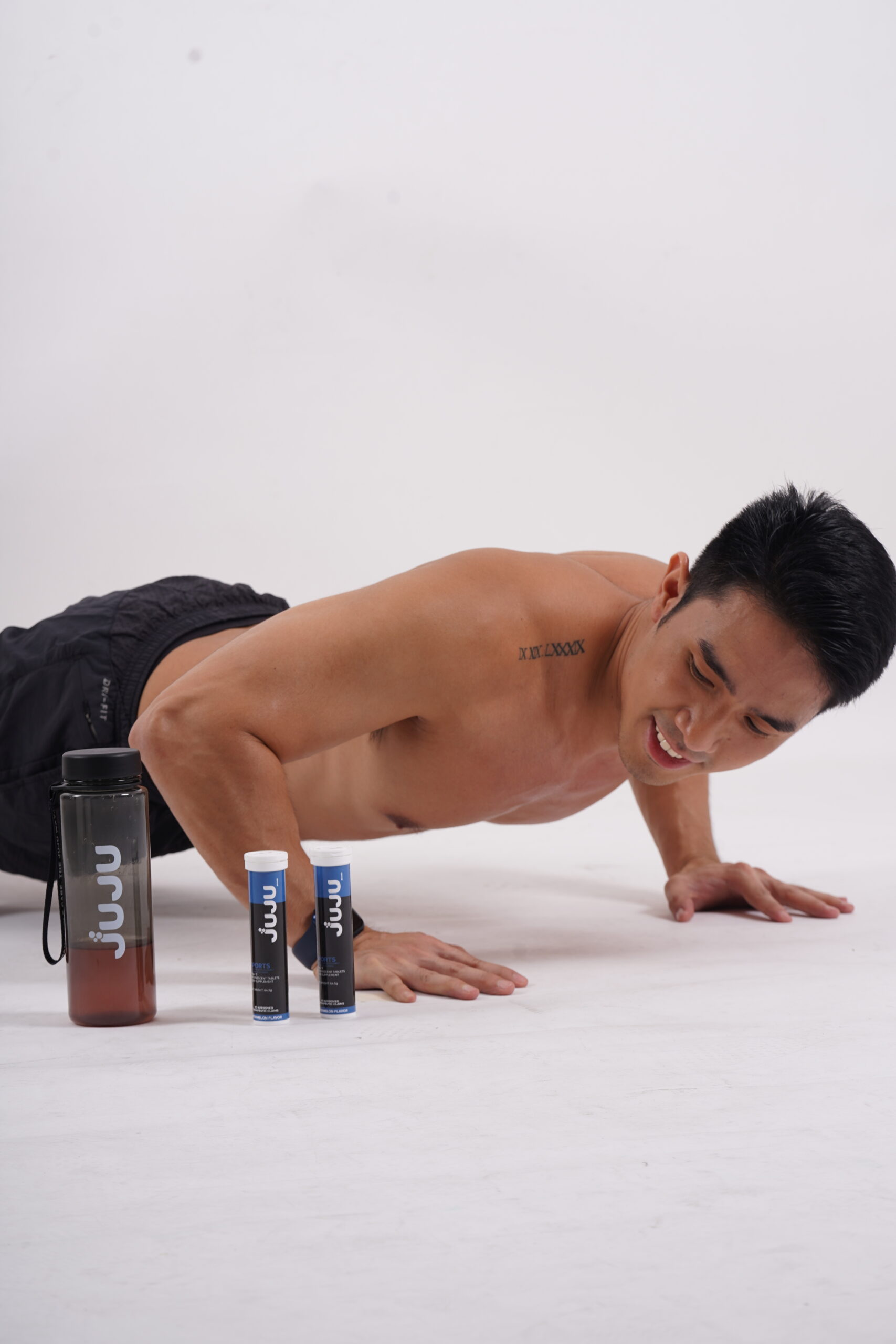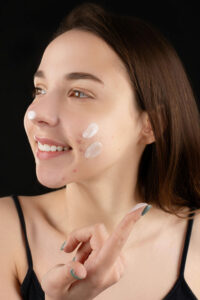The push up is one of the most effective bodyweight workouts you can do . Its popularity and success can be traced back to the fact that it is easy to use and useful. The incorporating push ups is an excellent exercise for anyone trying to increase muscle mass, reduce body fat, or just generally improve their fitness and health conditions. Let me tell you the push up benefits you probably didn’t know about, why many people enjoy push up so much and why it is a staple in exercise routine in its many forms.
There is no place like home to do push-ups, but they rank high on the list of the best bodyweight exercises in the world. Push-ups are an excellent exercise for developing strong arms and a toned upper body. With regular push ups every day , you may strengthen your upper body, so reducing the likelihood of injury, enhancing and maintain proper posture, and giving your physique more definition.
While most individuals are familiar with the push-up, some may be unaware of exactly which body muscle the exercise works and the wide range of health benefit it can bring to our body.
Learn what muscle groups are used during a push-up, as well as the benefits, drawbacks, and popular modifications of this exercise.
/ IN THIS ARticle
What is the Push-Up Workout?
Push-ups are great for conditioning the upper body and the abdominals. It may be tailored to suit a range of fitness levels, including beginner-friendly options as well as more advanced options for more experienced exercisers. The push-up is a versatile exercise that may be included in any bodyweight routine, circuit training programme, or strength training session.
Push-ups may seem like a basic workout that works simply your upper arms and chest, but when you do them the right manner, they utilise muscles all over your body. They cost nothing, can be modified to suit a variety of skill levels, and can be performed virtually anywhere.
Push-ups are a fantastic, anywhere-accessible exercise. They don’t need equipment or a gym membership. You can also alter them to fit your own physical capabilities or to target specific muscles.
5 Push Up Benefits
There are several scientifically based advantages to regularly performing push-ups, including but not limited to improved posture and bone density. Here are five arguments in favor of including this basic move into your practice (I call these as the 5 push up benefits ).
Helps Maintain Posture and Balance
When you perform a push-up, you also engage muscles in your core. The abdominal muscles, particularly the rectus abdominis and obliques, are crucial for stabilisation, especially in unstable push-up variations (such as on a ball or balance board).
Doing Push-ups Regularly May Help Your Posture.
Your posture may benefit from that strengthened core. Doing push-ups can aid in the development of better posture by strengthening the back, shoulders, and abdominal muscles. And that’s great news because bad posture has been linked to issues like aching backs, throbbing heads, and trouble breathing. Because of possible links to low energy and muscle exhaustion, it may also reduce how well you perform in physical activity.
Bone Health Is Improved By Performing Push-Ups
Bone mineral density (BMD) is an important measure of bone health and bone strength. If your bone density is low, you are at a greater risk of fractures and diseases like osteoporosis. With a fortunate turn of events, weight-bearing and resistance activities, such as push-ups, can aid in bone development.
You Can Burn Calories To Lose Weight
To aid in weight loss, working out to build muscle all over the body will help to encourage a faster metabolism, which in turn will cause the body to burn through more calories.
If your goal is to lose weight, push-ups can be a great tool because they help you build strength and get your heart rate up.
Doing push-ups for how long? how many calories? The answer is conditional on your age, gender, height, weight, and the intensity of your workout, among other things. However, it is estimated that doing seven push-ups in one minute will burn at least seven calories.
You Can Improve Your Heart Health
Push-ups can also help to get your heart rate up. In addition to helping you get stronger in your muscles, push-ups are great for your heart. Remember, push-ups activate numerous muscles at once. Your heart will have to work harder to deliver adequate blood and oxygen to the rest of your body.
Consistent push-ups will keep your heart strong, making the exercise a perfect supplement to any HIIT (high-intensity interval training) plan you might follow.
Variations Of Push-Up
There is a push-up variation for everyone, whether you’re a novice who needs to make the exercise more manageable or an established athlete who wants a greater challenge or to better have better athletic performance.
Decline push up
In the decline form of the push-up, your feet are raised instead of your hands. This causes the chest muscles to tighten, which makes the action marginally more challenging.
This form of the push-up is especially useful for strengthening the upper pecs (pectoralis major and minor), which is not as strongly worked in a regular push-up.
Incline push up
The inclined pushup is a variation where your hands are slightly elevated on a weight bench, step-up platform, park bench, or similar. This reduces the resistance slightly, making the exercise easier. Complete the movement just as you would with a standard push up.
One-arm push up
The most challenging variation of the push-up is the one-arm variety. One arm push-ups include raising and lowering the body using just one arm. You’ll begin in the same position as a standard push up. Then, at the last second before you start your descent, lift one arm behind your back and complete the action using only that arm.
Due to the high strain on the arm, this method should only be attempted by those with extensive experience. In this position you can feel that your entire body is shaking which is a good sign. If it is not done appropriately, it can cause harm.
Hand Tap
At the peak of your push-up, pause and tap your partner on the shoulder. Alternate your hand use between sets. Taking that second to halt strengthens your balance and shoulders.
Bent-Knee Push Up
This is a variation on the traditional push-up in which the body is supported by the knees instead of the toes. Maintain a straight line from your knees to your hips to your shoulders. If you bend at the hips, you’ll hurt yourself. The most popular adaptation to push-ups while building strength is to perform them on your knees. It’s a good warm-up for the plank position, which requires a lot more strength.
Stability-Ball Push Up
Boost the difficulty and results by include core stability exercises. Make sure you have a solid grasp of the fundamental push-up before attempting the stability ball variation.
Clapping Push-Up
In this plyometric move, you’ll push yourself up with enough force that your hands will leave the ground and you’ll clap while you’re in the air. Newcomers to physical activity should not attempt this. If you haven’t built up to them, you risk serious injury.
Push-Up With Lat Row
In this variant, the last part of each rep consists of alternating dumbbell lat rows. Adding this variation challenges you more, strengthens your core, and works your latissimus dorsi (back) muscles. Instead of using your body weight as resistance, try doing push-ups while gripping dumbbells in each hand. Pull the weight to your chest at the height of the movement, then slowly lower it back to the floor.
Rotational
At the peak of the push-up, you’ll rotate your body into a side plank while extending your upper arm straight overhead. This will strengthen your shoulders and obliques while also assisting with your equilibrium.
Single-leg raised
It’s not as hard as you might think! Carry out a push-up with one leg extended behind you at a right angle to the floor. Because of this, you’ll need to use your abs more actively to maintain your balance.
Shoulder tap
This has the same benefits as the hand tap push-up but is more effective at developing balance because of the slightly longer hold required.
Wall push-up
The push-up against the wall is the best option for beginners. It’s a great way to build up the muscle strength for regular push-ups. One more low-impact alternative is the wall push-up. Because of this, it is a fantastic choice for beginners.
When you do push-ups vertically against a wall instead of on the floor, the resistance is reduced, making the exercise easier to perform. Standing closer to the wall facilitates the movement. Keep both feet flat on the ground and spread your hands just outside of shoulder width. Drop down until your head almost hits the wall, then push off to get back up to standing.
Spiderman Pushup
What Groups of Muscles Do Push-ups Work?
They are great for strengthening your triceps, chest, and shoulders. They can also improve their lower back and core by using correct form and drawing in (activating) their abdominal muscles. Building muscle with push-ups is a quick and efficient way to get stronger. The push-up is an excellent upper-body workout because it uses multiple muscular groups at once.
Listed below are the muscle groups that will be worked during a regular set of push-ups:
- Pectoralis major
There are several muscles in the chest, but the pectoralis major is the largest. It has a thick, fan-shaped appearance and sits directly beneath the breast tissue. When doing a set of push-ups, this is what really gets things going.
There are two separate heads to the muscle. One is the medial portion of the clavicle, from which the head of the clavicle emerges. The sternocostal head is another structure that develops from the chest wall and the sternum.
Each of these heads has a unique point of origin; nonetheless, they both insert on the humerus (upper arm bone).
This muscle stabilises your body as your torso lowers towards the floor and propels you back to the top of the push-up.
- Triceps
The triceps, also called the triceps brachii, are a large, thick muscle near the rear of the upper arm.
Because it has three separate heads, the word “tri” describes this vital flexor muscle. There are three of them, and they are called the “medial,” “lateral,” and “long” heads, respectively.
An individual point of departure can be identified for each head. Both the medial and lateral heads of the triceps emerge from the humerus at the rear of the upper arm. Below the shoulder joint is where the long head begins to form.
There are three heads that meet at the elbow and insert onto the olecranon process.
The triceps aid with core stability during the initial half of the push-up, when the chest is almost touching the floor. In the second half, when the arms are fully extended, the triceps do most of the work.
- Pectoralis minor
The pectoralis minor is an often overlooked chest muscle. Located beneath the larger pectoralis major, it is noticeably more diminutive.
The third to fifth ribs in front of the body are the starting point for the development of this little, triangular muscle. The tiny, hook-like coracoid process at the scapula’s front is where it attaches. The pectoralis minor is responsible for stabilising the scapulae (shoulder blades) when doing push-ups. In doing so, proper alignment of the shoulder blades and upper back is achieved.
- Anterior deltoids
Large, triangular muscles atop the shoulder joints are called the deltoids.
These strong muscles, like the triceps, are divided into three sections, or “heads.” These sections are the anterior, lateral, and posterior heads. Since the anterior head is closest to the front of the shoulder joint, it receives the most attention during a push-up.
This head emerges from the anterior clavicle and attaches to the lateral humerus of the upper arm.
The anterior deltoids assist in adducting the shoulder joint, which means they aid in drawing the arms in towards the chest during the upward phase of the push-up. During the lowering phase, they also aid in shoulder stabilisation.
The triceps aid with core stability during the initial half of the push-up, when the chest is almost touching the floor. In the second half, when the arms are fully extended, the triceps do most of the work.
- Fixators
Shoulder rotator cuff (secure the humeral head in the glenohumeral joint), upper trapezius (aids in scapular elevation), and abdominals (hold the spine straight). The latissimus dorsi muscles (which help maintain shoulder stability) and the quadriceps (which help maintain a firm, upright position for the legs) are other important fixators.
Push Up Risks
Push-ups carry the same potential for injury as any other form of physical activity.
Mistakes in technique are a common cause of harm. If someone is unsure how to execute the many pushup variations, they should consult a fitness instructor.
Consistent push-up practise necessitates that you perfect your technique. If you don’t know how to do a pushup properly, you could really hurt yourself. If you don’t know how to do push-ups correctly, you could end up hurting your back or shoulders.
1. Elbow injury
In 2011, researchers looked into how fast or slow you do pushups and how it affected their elbows. Investigators compared fast, moderate, and slow push-up times.
The stresses exerted on the elbow joints, ligaments, and surrounding tissues were observed to increase with increasing pushup speeds. They deduced that doing push-ups at a faster pace may raise the likelihood of injury to certain areas.
Muscle activation was found to be higher when participants performed push-ups at a slower pace.
These results imply that doing push-ups at a slower pace is not only safer, but also more likely to lead to enhanced muscular
2. Back pain
The lower back muscles are particularly engaged by the BP and the FP pushup variations. This could cause discomfort and soreness in the lower back.
When you do push-ups, you compress your spine’s movable joints for a little while. When two vertebrae connect with one another, the resulting connection is called an intervertebral joint. The vertebrae in your spine are separated from one another by a cushion of tissue called an intervertebral disc. Wear and tear of these discs, which can cause discomfort and stiffness, may be exacerbated by engaging in excessive weight bearing workouts.
People with back problems should consult a doctor before adding push-ups to their workout plan.
3. Wrist pain
When doing weight bearing workouts, such as pushups, some persons develop pain in the wrists. When bending one’s hand behind one’s back, most of the discomfort is felt in the back of the wrist.
Pain in the wrist’s back as a result of carrying weight was linked to a structural defect in 84% of research participants in 2017. One tiny ganglion cyst was responsible for about 76 percent of these instances. After muscle strains, partial ligament tears were the second most common source of pain.
It is unclear whether or not these anomalies resulted from prolonged weight bearing.
However, anyone experiencing wrist pain while performing push-ups ought to visit a doctor. They may be able to recommend a wrist brace or other means of protection for the wrist while working out. A physician may instead suggest a different form of physical activity.
Frequently Asked Questions
Doing pushups every day can be effective if you’re looking for a consistent exercise routine to follow. You will likely notice gains in upper body strength if you do pushups regularly. For the best results, continue to add variety to the types of pushups you do.
Many people do more than 300 push-ups a day. But for an average person, even 50 to 100 push-ups should be enough to maintain a good upper body, provided it is done properly. You can start with 20 push-ups, but do not stick to this number. It is important to keep increasing the number to challenge your body.
Push-ups are a great exercise movement to help improve upper body pushing strength. They can help to build muscle mass, strength and endurance, dependant on how you vary volume, sets and reps.
Push-ups are known to be more effective than planks in terms of muscle building, calorie burning, increasing muscular endurance, and developing cardiovascular health. Push-ups provide a more intense workout for the chest, arms, and shoulders as compared to planks.
Conclusion
If you want to get in shape quickly, doing push-ups might be the best way to achieve it. Push-ups, with their low barrier to entry and high return on investment, are an exercise staple for good reason. In any case, excess of anything is undesirable. If you want to make sure you’re using your push-up workouts responsibly, it’s a good idea to keep track of your results using a fitness tracker.
Next time you are at the gym, don’t head straight for the treadmill. Instead, go do some push-ups in the weight room.
- https://www.verywellfit.com/the-best-exercises-for-core-strength-3120054
- https://www.healthline.com/human-body-maps/pectoralis-major-muscle#1
- https://www.healthline.com/human-body-maps/pectoralis-minor#1
- https://www.springer.com/journal/40846
- https://www.ncbi.nlm.nih.gov/pmc/articles/PMC4732391/
- https://pubmed.ncbi.nlm.nih.gov/29085728/
Related Stories

Psst! 🤫
Wanna be part of the…
JUJU VIP CLUB?
Get VIP-only discounts, exclusive promos, and sale notifs before everyone else!
Plus… get
GET 10% OFF
your first order!
Joining is FREE and EASY!
Just fill out the form below:









